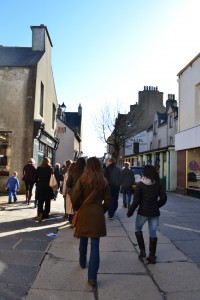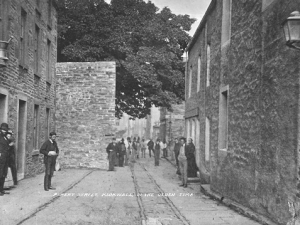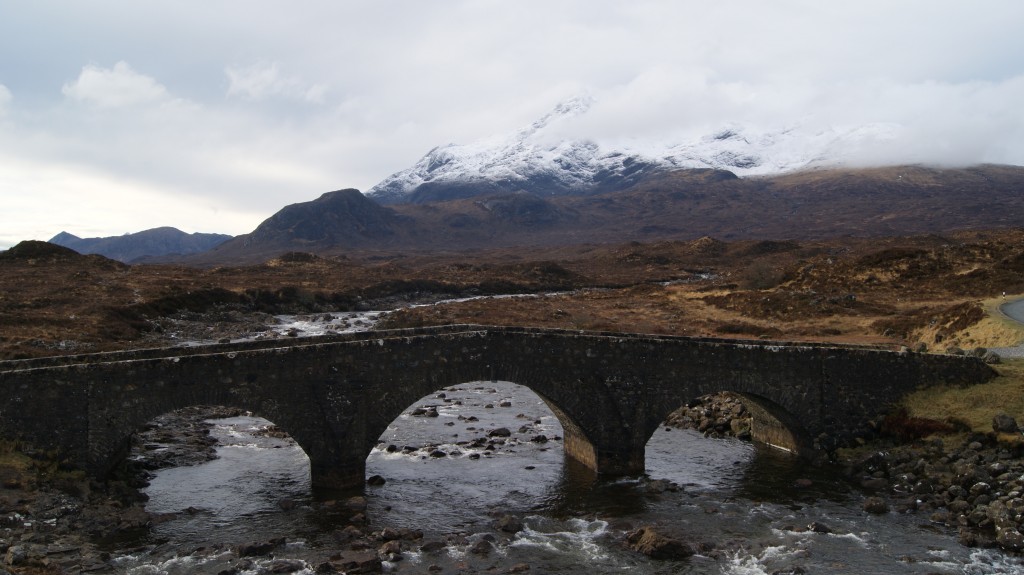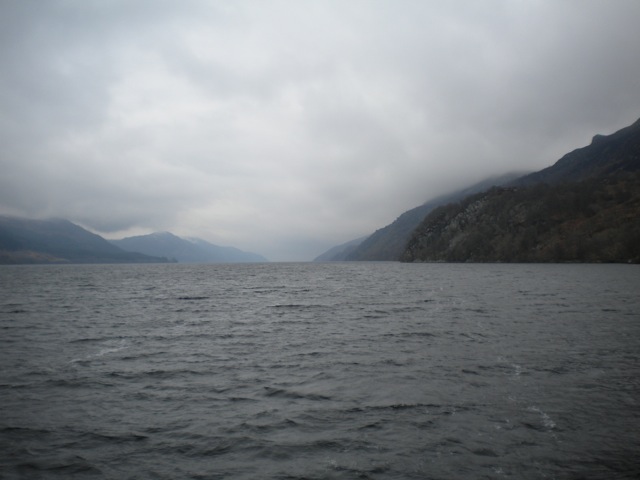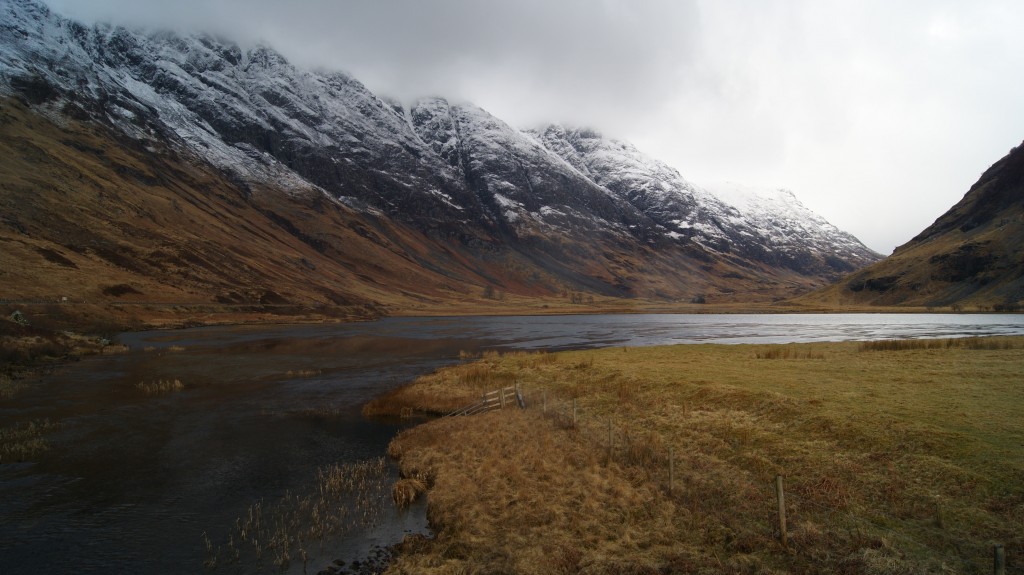Kirkwall, the capital of Orkney, is a quaint, picturesque town seated in the center of the historic Orkney Islands. With its charming local shops, restaurants, and a postcard-perfect view of the town’s harbor, Kirkwall is the ideal destination for relaxation. One could spend a day leisurely strolling through the winding cobblestone streets of the city center, window shopping and enjoying a serving of the “world’s best” Orkney ice cream, but to depict Kirkwall only as a trendy vacation spot would be to ignore its significance altogether. Like most Scottish cities we have visited thus far, Kirkwall is much more than its modern surface allows. Beyond the decorated shop fronts and tourist attractions, Kirkwall is steeped in a rich, somewhat mysterious and superstitious history. Founded in 1035 by Earl Rognvad Brusason, the Viking town of Kirkwall derived its name from the Old Norse, ‘Kirkjuvagar,’ meaning ‘church- bay.’ Today Kirkwall stands as one of the best-preserved ancient Norse towns. For more information on the sites and attractions of Kirkwall, visit the town’s official website.
After walking briefly through the streets of the center of the town, we made our first stop at the famous St. Magnus Cathedral. The church stands in the center of the town, representing Kirkwall’s historic foundations amidst the modern renovations of the boutiques, cafes, and restaurants. It was built in 1137 as the final resting place for the remains of St. Magnus, who, legend holds, refused to join the violent raids that his father, the King of Norway, led in 1098. He was thereafter executed for his betrayal and thus given sainthood by the Church. Inside the cathedral is a painted depiction of St. Magnus’ life, as well as his remains. Lining the walls are various tombstones of town members of Kirkwall, most dating back to the seventeenth century. The décor of the church, both inside and outside, is simple, beautiful, and medieval. Primarily built out of red sandstone, St. Magnus Cathedral is bright and welcoming, especially with the addition of the yellow stone complimenting the front arches. The church is yet another example of the Scottish specialty of intertwining timeless beauty with historic antiquity.
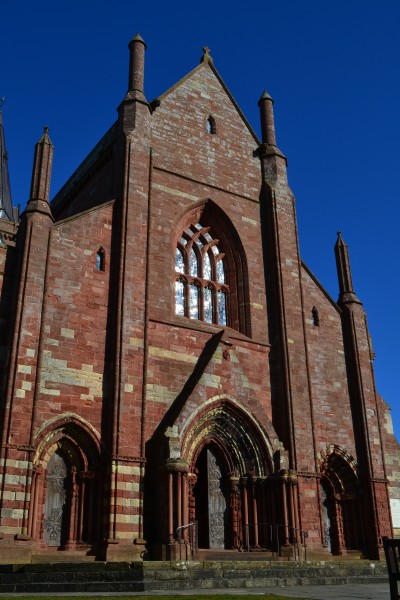
One of the most interesting aspects of Kirkwall is its annual mass football (soccer) game called the “Ba.” The Ba’ is played every year on Christmas and New Years day in the streets of Kirkwall with the goals at the ends of the town. The men of Kirkwall are sorted into two teams– the Uppies and the Doonies– and they spend the day pushing, shoving, and fighting for the win. A key part of the game is that there are no rules. Our soothing-voiced tour guide, Sue, told us that one year a man smuggled the ba into his car and drove it across the goal line. His tactics were met with objections as to the legality of motor vehicles in the ba game, but they were dismissed because only one rule triumphs– anything goes.
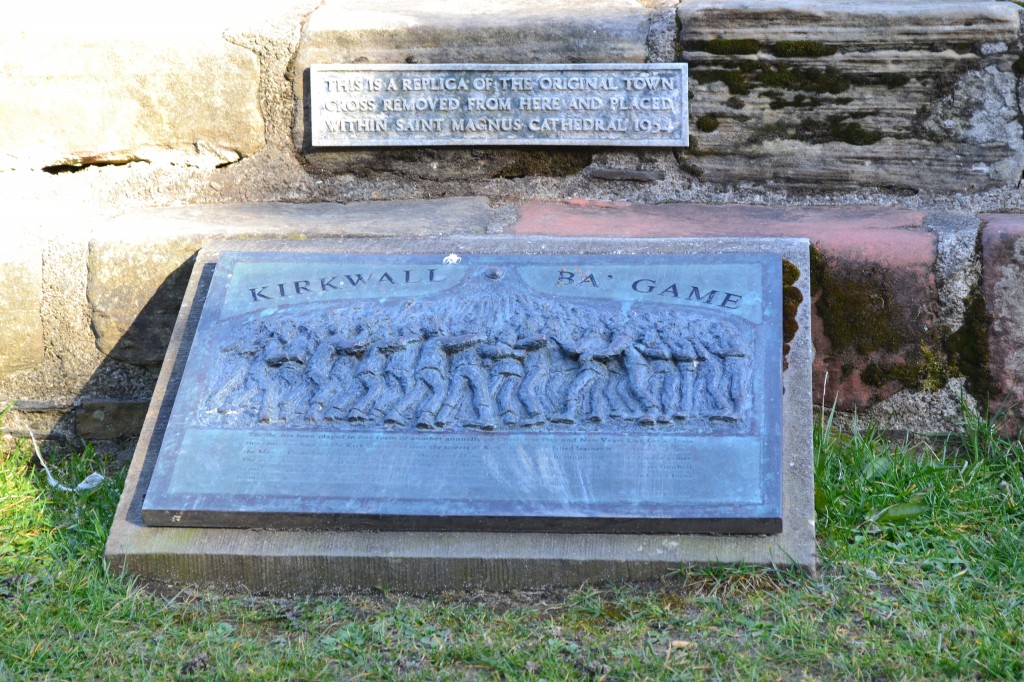
The game dates back to the mid-seventeenth century and the people of Kirkwall are quite determined to keep the tradition alive. The Ba’ is thrown up to the crowd at the Mercat Cross in the center of Kirkwall with the Uppies goal at the end of the street opposite the Catholic church and the Doonies’ goal is down in the harbor. After watching several YouTube videos of the “throw up” at the start of the match, it seems that the game can bit slow with upwards of one-hundred men squishing together in an attempt to seize the ball. It appears to be a bit like a rugby scrum, but it requires much less athleticism and a lot more wasted energy on pushing and shoving anyone who gets in your way.
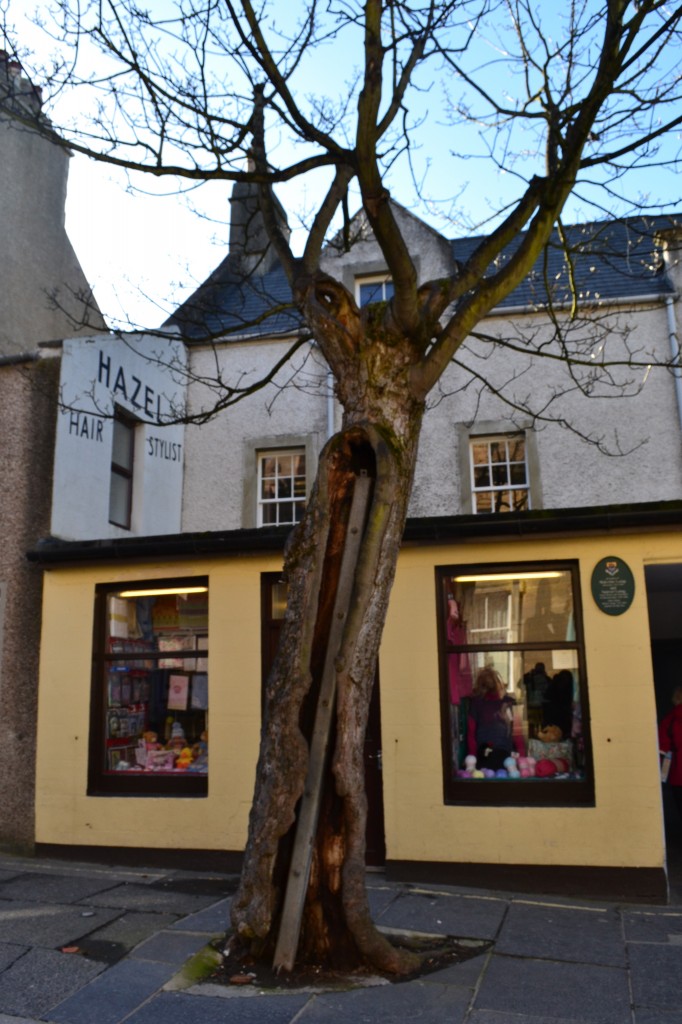
As Sue continued to show us the town of just 7600 people, it was clear we stood out. Our group seemed to take up every restaurant, monument, and street we visited, and as proof of this, please check out the Kirkwall Webcams. The main road we walked on did not even have sidewalks, so it was shared among pedestrians and cars. Sue mentioned everyone in Kirkwall waved to one another, and that small-town feel was evident. Another highlight of our tour occurred when Sue pointed out Kirkwall’s Big Tree. Throughout our weekend we were repeatedly told by various members of the close-knit Orkney community that few trees are on the islands; in fact, Kirkwall’s Big Tree on main street is often called the only tree in Orkney. Having survived over two hundred years after the town council bought it for just five pounds so a chemist wouldn’t chop it down in the late 1800s, the tree really is a marvel, rising from pavement but shadowed by thick buildings, an explanation as to how it has lasted so long. The sycamore tree stands, steel-enforced mind you, as a symbol of the town’s dedication to preservation of culture and history.
